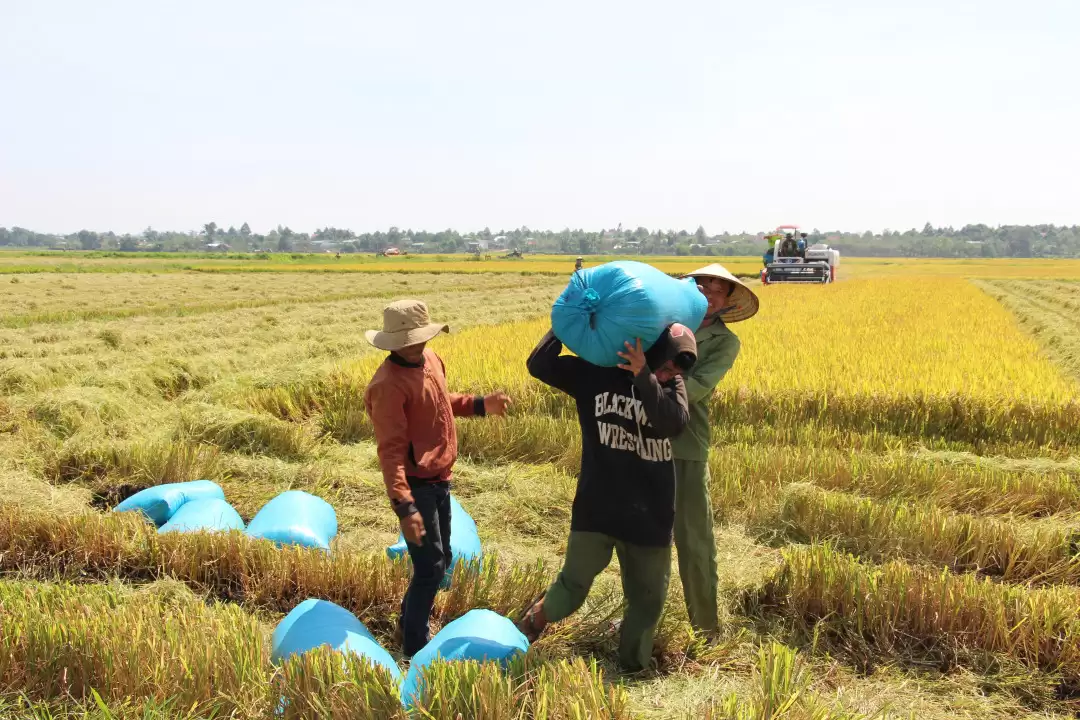While the Mekong Delta (ĐBSCL) region has only recently harvested rice crops grown with emission-reduction practices, Đắk Lắk has become the first province in Vietnam to sell carbon emission reductions from rice, priced at 20 USD per ton of reduced CO2.
Recently, the Đắk Lắk Department of Agriculture and Rural Development held a summary meeting for the pilot model “Green rice solutions to reduce emissions and increase productivity, implemented during the 2023-2024 winter-spring crop season.”
At this meeting, Net Zero Carbon Joint Stock Company, in collaboration with its exclusive development partner, GreenUP, purchased nearly 17 tons of CO2 emission reductions from the rice cultivation model of farmers in Bình Hoà commune (Krông Ana, Đắk Lắk). Each ton of carbon reduction from this rice was purchased for 20 USD. However, this was not a carbon credit (carbon credit) transaction, as the emission reduction was only recognized by Net Zero Carbon and bought back by the company itself as an incentive for low-emission rice cultivation.
As the exclusive project development partner for Net Zero Carbon, GreenUP plays a pivotal role in implementing the green rice cultivation initiative. GreenUP is responsible for developing and scaling sustainable practices that reduce carbon emissions in agricultural production. The company works closely with Net Zero Carbon to monitor, report, and verify emission reductions, ensuring that the project aligns with international standards. GreenUP’s expertise in carbon credit markets and project management has been instrumental in the successful pilot and future expansion of this initiative.

This is the first successful sale of carbon emission reductions from rice in Vietnam, achieved through the pilot model of “Green rice solutions to reduce emissions and increase productivity” in Đắk Lắk. This price is also double the price of carbon credits that the World Bank has committed to pay for the project of 1 million hectares of high-quality, low-emission rice in the Mekong Delta.
Previously, in Bình Hoà commune, farmers implemented a pilot model of low-emission rice production. The model applied the alternate wetting and drying rice cultivation method from the International Rice Research Institute and followed the emission reduction reporting and verification process of Net Zero Carbon Joint Stock Company.
After more than three months of implementation, the pilot model has delivered positive results. Compared to the control model, rice yield increased by nearly 1 ton per hectare, investment costs decreased by nearly 10%, and profits increased by almost 20%. Notably, this model helped farmers shift from traditional farming methods, reduce environmental pollution, and improve rice field soil quality.
Through trials, the model reduced greenhouse gas emissions by nearly 17 tons (carbon), contributing to environmental protection, producing cleaner rice, and ensuring safer production.
Based on these initial results, the Đắk Lắk Department of Agriculture and Rural Development will expand the model to 500 hectares of rice across the province in the 2024-2025 winter-spring crop season. This will gradually contribute to Vietnam’s international commitments on net emission reductions in agricultural production.
According to Nguyễn Văn Hà, Deputy Director of the Đắk Lắk Department of Agriculture and Rural Development, the department will outline specific programs with local authorities, agricultural extension agencies, and the Crop Production and Plant Protection Sub-department. They will also closely coordinate with company staff to identify areas for implementation and guide farmers and cooperatives to follow the process correctly to achieve the set goals.
The successful sale of carbon credits from the green rice cultivation model in Bình Hoà commune is an important foundation for Đắk Lắk to sustainably develop the rice industry, increasing value, improving incomes for farmers, and raising the status of this product to become a provincial strength. This will contribute to the transformation of Vietnam’s rice industry toward green and sustainable development.







